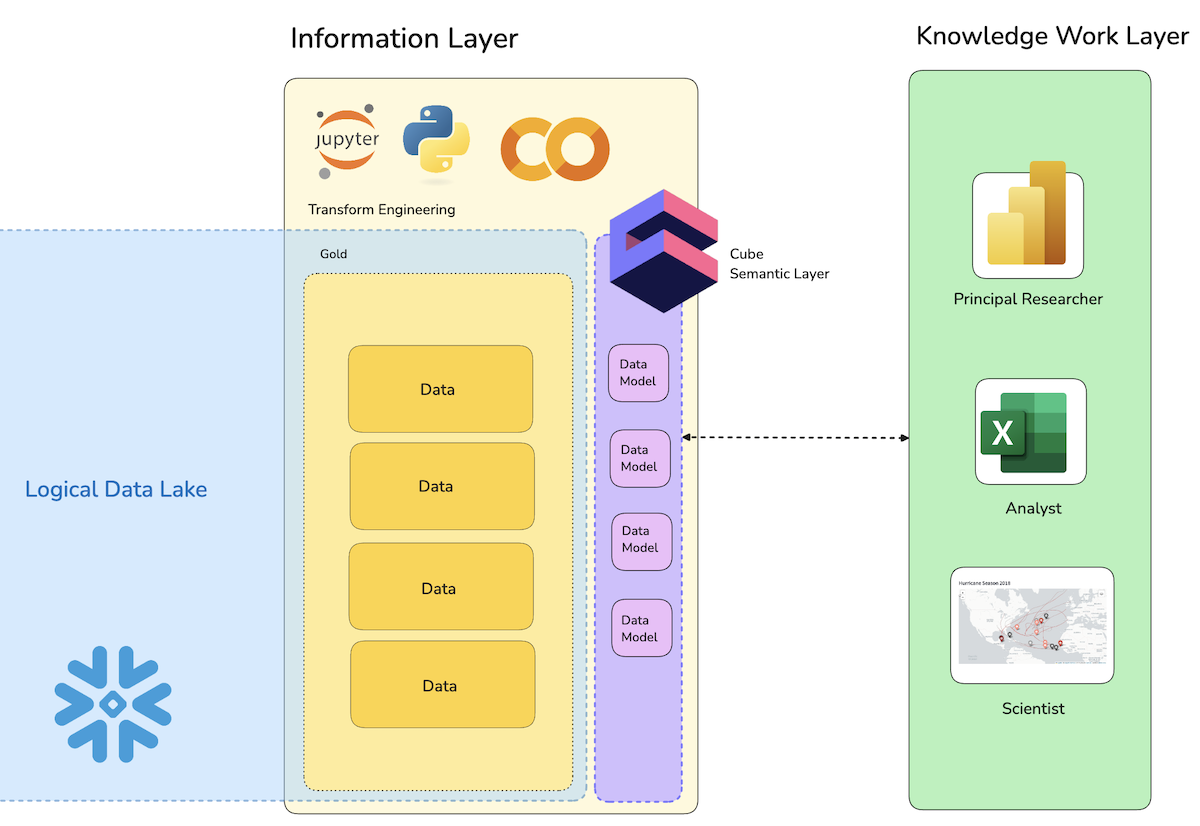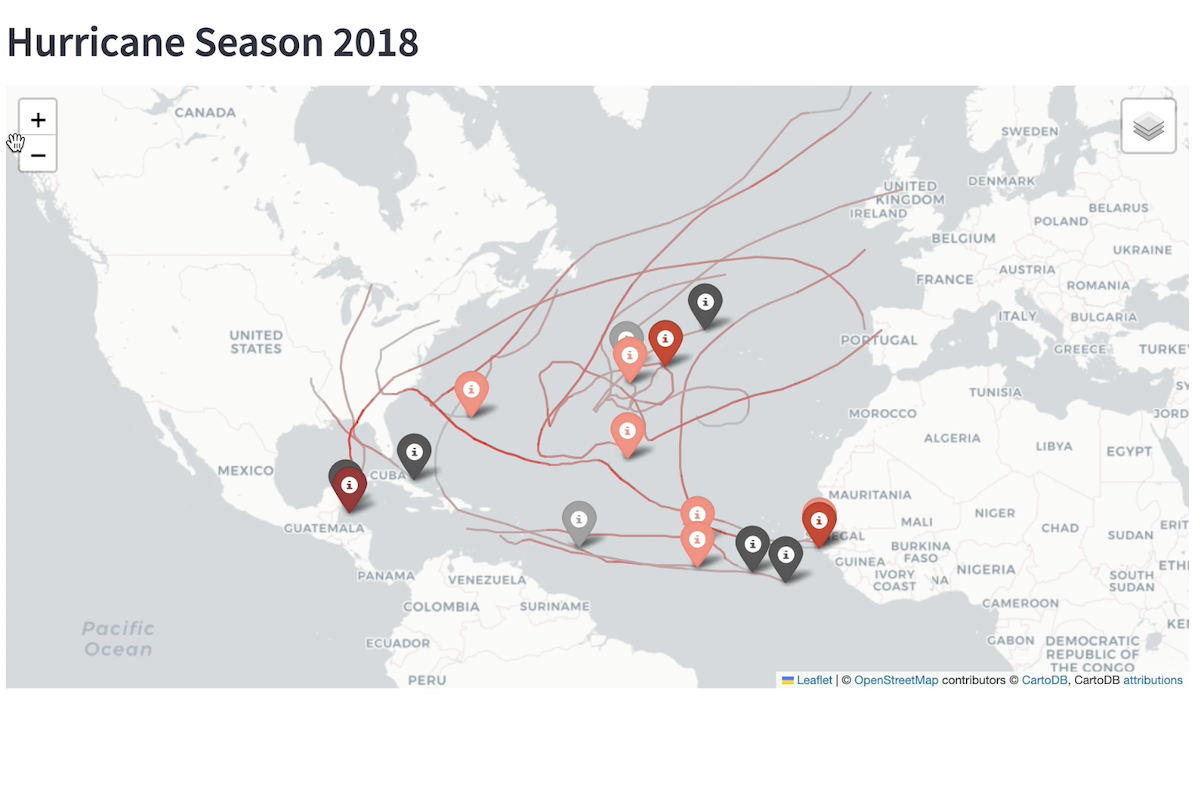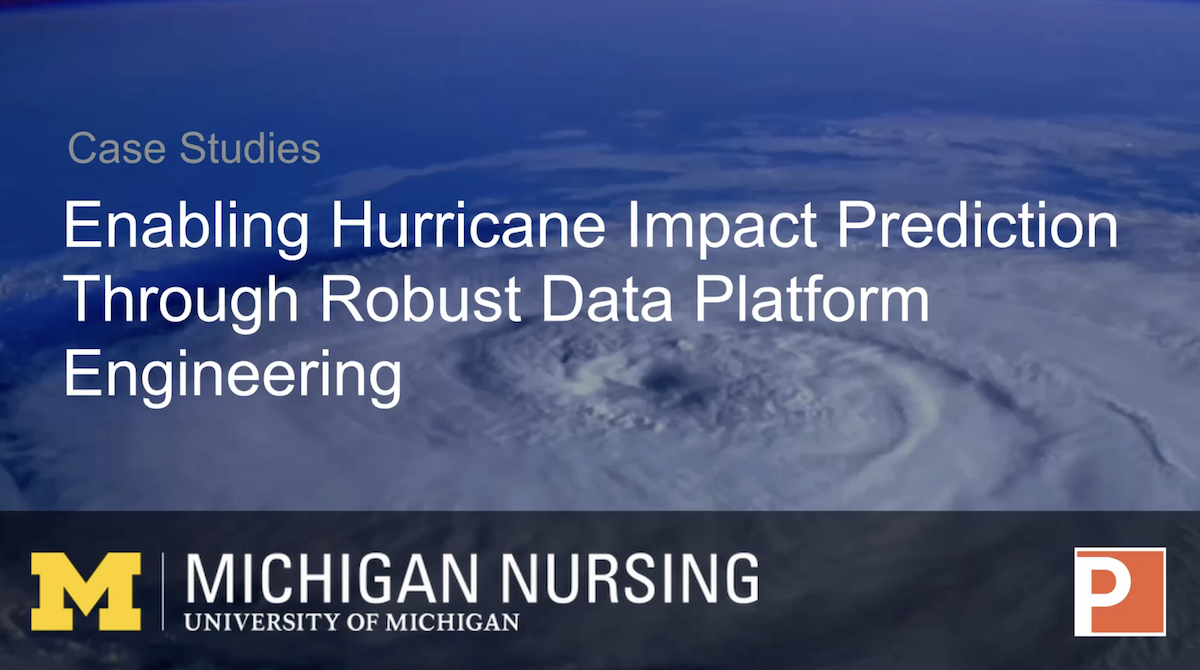Case Studies / University of Michigan
Enabling Hurricane Impact Prediction Through Robust Data Platform Engineering
A Case Study of How Patterson Consulting Helped The University of Michigan's College of Nursing research team build out a Google Cloud data platform to enable their hurricane impact prediction modeling.
University of Michigan's Platform Challenge
The researchers were struggling to extract granular hurricane geospatial data and integrate it with hospitalization data on per FIPS code resolution.
Patterson Consulting's Solution
The Patterson Consulting team accelerated the College of Nursing's data platform by:
The University of Michigan College of Nursing has launched a research initiative aimed at developing predictive models of healthcare usage following major hurricanes. By integrating advanced data analytics and machine learning techniques with demographic, clinical, and storm-related information, this work seeks to identify where and when hospital admissions are most likely to surge, thereby helping healthcare systems plan for and mitigate resource constraints.
The University of Michigan College of Nursing is adopting a multifaceted strategy that leverages advanced data analytics and machine learning to forecast healthcare usage following hurricanes. By integrating historical storm paths, demographic factors, and clinical data—including Medicare and Social Vulnerability Index metrics—their models aim to pinpoint areas most vulnerable to admission surges. This data-driven approach enables healthcare providers and city planners to anticipate resource needs, streamline emergency response, and ultimately mitigate the risks associated with catastrophic hurricane events.
The Data Platform Challenge
Initially the College of Nursing research team had multiple raw data sources in different data systems that they were unable to get into one place for analysis. The data was in different formats and in need to cleaning, synchronization, and validation work.
There was no processing or analytical infrastructure for the data. These limitations posed challenges to delivering timely, high-quality data crucial for applications such as hurricane geospatial impact analysis or medicare data exploratory data analysis. The research team was struggling to get a handle on what data they had available because they could not easily explore the data to develop an intuition on how to best analyze the hurricane geospatial data and medical data.
Implementation Journey
The implementation journey for the University of Michigan College of Nursing research team began with a deep knowledge workflow review to understand how they worked. From there we analyzed their project goals, the tools they wanted to use, and the datasets they needed to integrate to reach those goals.
Once we understood what information was needed for the project, our platform engineering team stood up the appropriate information architecture in Google Cloud Storage to organize the incoming data. Once we had the information architecture ready, we could begin standing up data ingest pipelines to pull in:
- hurricane geospatial data
- FEMA hurricane damage data
- general geospatial map data
- medicare data
This external data integration pattern can be seen in the diagram below, where incoming data is being placed in a bronze layer of a medallion data architecture pattern in storage.

Through a series of python ETL pipelines, the data was transformed into information ("data models") in the Information Layer of our architecture. In this layer, transform engineering tools such as Jupyter noteboks could analyze the data for EDA and further refinement purposes.
These ETL and transform engineering processes produced consolidate usable information for the research team ("Knowledge workers"). The produced information ("data models") were created in a semantic layer for further analysis and usage by the research group via APIs such as ODBC and REST. This allowed for multiple knowledge work tools such as PowerBI, Excel, Google Sheets, and our custom geospatial EDA tool to work on common data models. The architecture can seen in the diagram below.

The Patterson Consulting engineering team also created a custom Streamlit application for geospatial EDA that allowed researchers to quickly map and compare hurricane attributes (location, track, FEMA damage, wind speed, etc) across 50 years of hurricane data, as seen in the diagram below.

To accelerate the knowledge work of the researchers, a generative AI natural language interface was added over the geospatial EDA tool to allow faster data analysis. It allow analyses such as:
- show all storms in a specific hurricane season
- analyze a specific depression forming in the atlantic and compare it to historical storms that formed nearby
- show the wind speeds per-FIPS code of a specific historical storm and its associated FEMA damage per FIPS code
These next-generation generative AI-based tools allowed the researchers to work with 50 years of hurricanes faster than they could have with just traditional code and dashboards.
Project Results
To support and accelerate the College of Nursing's data platform challenges, Patterson Consulting engineered and deployed a modernized compute platform centered a cloud data warehouse, data engineering pipelines, and a semantic layer for modernized information analysis. Patterson Consulting also developed a generative AI user interface to quickly navigate decades worth of detailed hurricane geospatial data so researchers could work with the data faster.
By integrating this data platform with analytical tools, machine learning tooling, and generative AI conversational user interfaces, Patterson enabled a scalable, self-service environment for UM's researchers. The new platform allows seamless access to Jupyter notebooks, source code, and accelerated computing resources. It also supported efficient exploratory data analysis to help the team build unique insights into how hurricane geospatial data correlated with the impact on medicare data.
This transformation accelerated the College of Nursing's ability to generate timely, high-value insights. This knowledge work acceleration led to the discovery of how hospital admissions spikes occur during hurricanes based on geospatial location.
Strategic Impact of the Project
By leveraging predictive modeling techniques, the University of Michigan College of Nursing’s research offers urban decision-makers data-driven insights into resource allocation following hurricanes, particularly in densely populated and growing urban areas. The ability to anticipate healthcare surges—especially in historically marginalized and at-risk communities—enables a more proactive deployment of critical resources like medical staff, supplies, and emergency transportation.
"nice quote here."
This targeted approach helps municipal leaders and healthcare networks mitigate disruptions, safeguard public health, and maintain the essential services that underpin economic and social stability in rapidly expanding urban environments.
Why Patterson Consulting?
The University of Michigan College of Nursing selected Patterson Consulting for its unique ability to customize a data platform and generative AI tooling to their specific research needs. Patterson Consulting was able to bring together the data platform, information architecture, knowledge work tooling, and custom generative AI methods that lowered operational expenses and delivered the information needed to power complex research.
Need help with data platform architecture?
Reach out to start a discussion with our team about your data platform needs.
Talk to our team